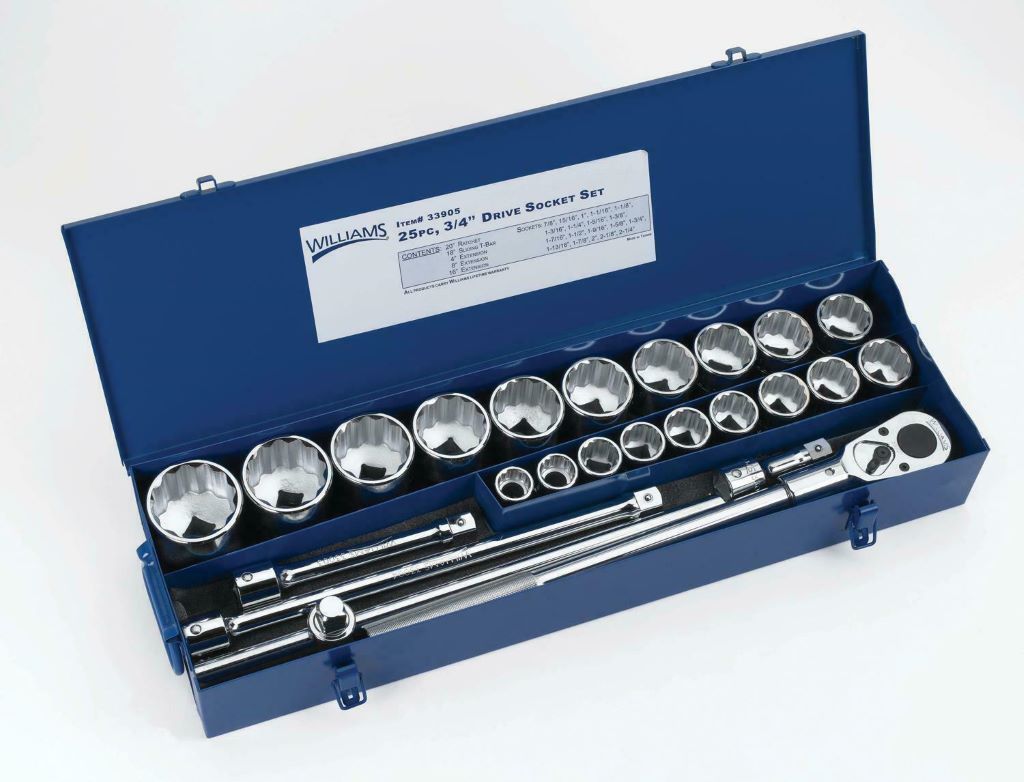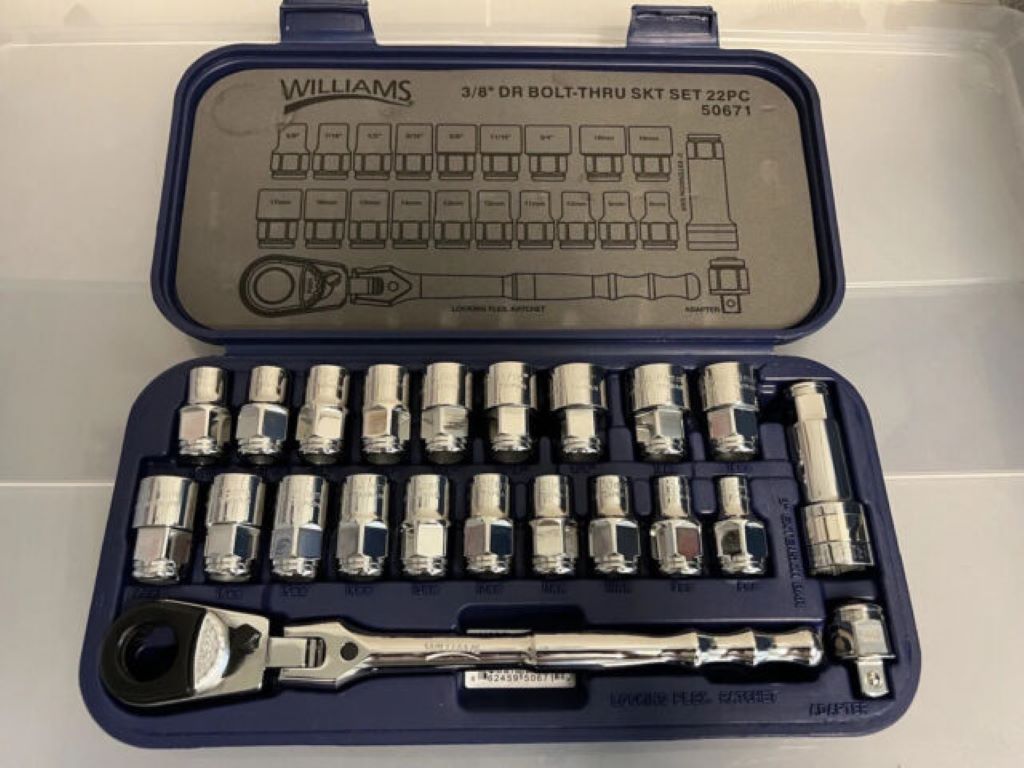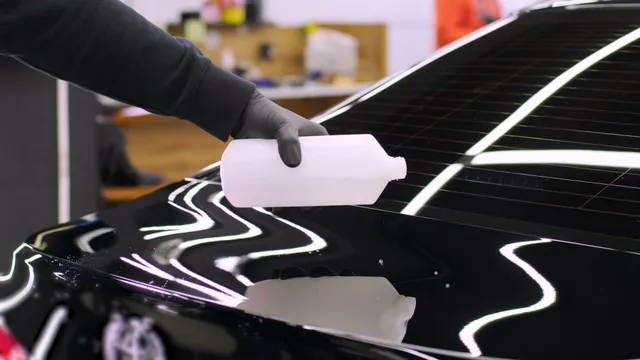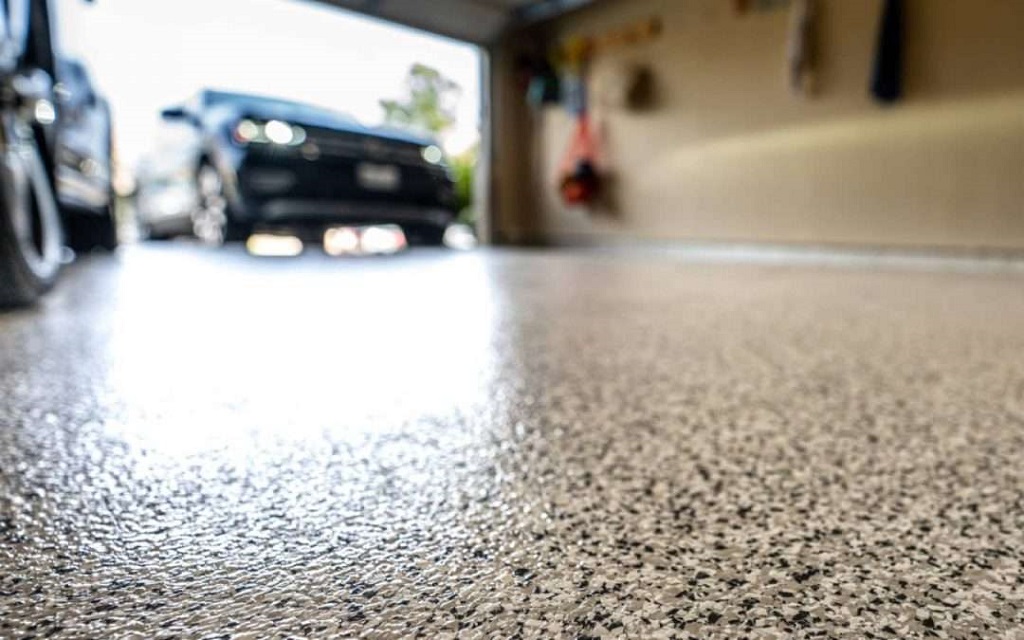Williams, a legacy brand in the tool industry, has earned the trust of professional mechanics and DIY enthusiasts alike. People widely recognize their socket sets for their durability, precision, and versatility. If you’re involved in automotive repair – from routine maintenance to complex engine work – understanding the top applications for Williams socket sets can elevate your work.
Why Choose Williams Socket Sets?
Before diving into specific uses, let’s highlight the key advantages of Williams socket sets that make them a preferred choice:
- Durability: Crafted from high-quality alloy steel, these sockets withstand the rigors of regular use and high torque applications.
- Precision: We meticulously machine each socket to ensure it fits snugly on fasteners, reducing the risk of rounding or stripping.
- Versatility: Williams offers a wide range of socket sizes, drive types (1/4″, 3/8″, 1/2″), and configurations to tackle various automotive tasks.
- Innovation: The brand incorporates features like their Supertorque® lobular design for improved grip and their high-visibility markings for easy identification.
Williams Socket Sets: Top Applications in Automotive Repair
Engine Work:
- Cylinder Head Bolts: Williams deep well sockets and extensions are invaluable for accessing and tightening cylinder head bolts with proper torque.
- Spark Plugs: Special spark plug sockets with a rubber insert protect delicate ceramic insulators and ensure a secure grip.
- Intake Manifold: Removing and reinstalling the intake manifold often requires a variety of socket sizes and extensions.
Suspension and Steering:
- Strut Nuts: High-torque impact sockets are essential for loosening and tightening strut nuts during suspension repairs.
- Tie Rod Ends: Socket wrenches with adjustable torque settings allow for precise adjustments to tie rod ends.
- Control Arms: Various socket sizes are needed to remove and replace bushings and fasteners on control arms.
Brake System:
- Caliper Bolts: You can remove and install brake calipers with Williams sockets, ensuring proper brake function.
- Bleeder Valves: Line wrenches, a specialized type of socket, grip and turn brake bleeder valves, facilitating fluid replacement.
- Brake Lines: Flare nut wrenches, another type of socket, loosen and tighten fittings on brake lines.
Transmission and Drivetrain:
- Transmission Pan Bolts: A socket set is necessary for removing the transmission pan during fluid changes or repairs.
- Driveshaft Bolts: Impact sockets help loosen and tighten driveshaft bolts during removal or installation.
- Differential Cover: Sockets are used to remove and reinstall the differential cover during fluid changes or repairs.
General Maintenance:
- Oil Changes: We use socket wrenches to remove and tighten oil drain plugs and filter housings.
- Tire Rotations: Lug nut sockets are essential for removing and tightening lug nuts when rotating tires.
- Battery Terminals: You can use a socket wrench to loosen and tighten battery terminal nuts and bolts.
Related: The Gearhead Garage: Pop the Hood on Car Care Questions and Rev Your Knowledge Into High Gear
Pro Tips for Using Williams Socket Sets
- Choose the Right Drive Size: Match the socket’s drive size to the job. Smaller drives (1/4″) are for lower torque applications, while larger drives (1/2″) are for high-torque tasks.
- Use Extensions Wisely: Extensions provide extra reach, but excessive extension can lead to socket breakage.
- Apply Proper Torque: Use a torque wrench to tighten fasteners to the manufacturer’s specifications.
- Protect Your Sockets: Avoid dropping or throwing sockets as they can damage the internal mechanisms.
- Clean and Lubricate: Keep your sockets clean and lightly lubricated to ensure smooth operation and prevent rust.
Conclusion
Williams socket sets are a worthwhile investment for anyone serious about automotive repair. Their quality, versatility, and innovative features empower you to tackle a wide array of tasks with confidence and precision. Having a Williams socket set in your toolbox will undoubtedly make your automotive repair endeavors smoother and more successful, whether you’re a professional mechanic or a DIY enthusiast.





